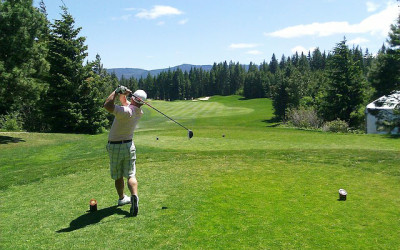Golf season is in full swing! While this pastime is enjoyed by many, it can be a violent sport. This may sound extreme since the only contact it involves includes a 1 pound club with a 1.62 oz ball, but the truth is golfers of all ages and skill levels are at a risk for injury due to the strong forces generated and muscular control required when taking a shot. Look at Tiger Woods, he recently underwent microdiscectomy surgery to fix his ailing back and has had multiple other surgeries over the course of his career.
The low back, or lumbar spine, is especially vulnerable to injury during a golf swing due to our anatomy. Lumbar discs are at greatest risk during rotation and compression. We often see discs become the weakest link when the rest of the body isn’t in ideal shape or position. Decreased hip flexibility, poor lumbar mobility, and lack of proper abdominal muscle activation have all been shown to relate to lumbar injuries while golfing. The good news is, back pain and risk of injury decrease when simple exercises are performed and progressed under the direction of a skilled Physical Therapist.
I recently read a great article on golf injury prevention entitled Functional Rehabilitation Exercise Prescription for Golfers. The authors state that the endurance capacity of the core musculature is extremely important in those who have suffered a low back injury. They recommended a few key exercises including:
Bird dog – 1-2 sets x 10 repetitions
Front planks – 1-2 sets x 10 second hold
Side planks – 2-3 sets x 10 second hold
Crunches – 1-2 sets x 25 repetitions
In my experience as a golfer, I feel like side to side flexibility and glut/core strength are important areas to keep in shape. In my practice, I find it valuable to address individual physical needs of golfers, then incorporate functional movements and swing patterns.
Don’t let back pain get in the way of enjoying your golf game, or set yourself up for an injury that will take you off the course all together! If you feel you may not be in ideal golf shape, consult with a Physical Therapist or golf professional that can point you in the right direction and provide supervised training.

